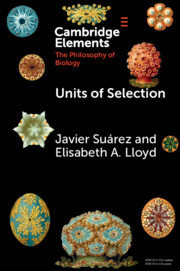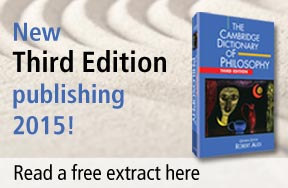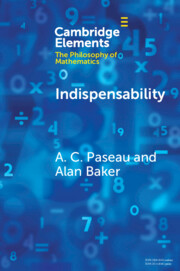Units of Selection
Part of Elements in the Philosophy of Biology
- Authors:
- Javier Suárez, Jagiellonian University, Krakow and Universidad de Oviedo, Spain
- Elisabeth A. Lloyd, Indiana University
- Date Published: September 2023
- availability: Available
- format: Paperback
- isbn: 9781009276412
Paperback
Other available formats:
Hardback, eBook
Looking for an examination copy?
This title is not currently available for examination. However, if you are interested in the title for your course we can consider offering an examination copy. To register your interest please contact [email protected] providing details of the course you are teaching.
-
This Element introduces the Disambiguating Project (DP) about the units of selection. By DP, the authors mean the thesis that the expression 'units of selection' refers to at least three non-co-extensional functional concepts: interactor, replicator/reproducer/reconstitutor, and manifestor of adaptation/type-1 agent. They present each concept and demonstrate the necessity of their isolation, because each of them responds to a distinct question about the units of selection, and these distinct questions are not always posed in combination in today's biological research. They further apply the framework to the analysis of the debates concerning the Evolutionary Transitions in Individuality (ETI) and argue that the DP interprets the ETI better than any project rejecting the three meanings of 'units of selection.' Thus, they claim that the differentiation between at least these three functional concepts is fundamental to clarify some conceptual confusions in biology, which rest on the conflation of these distinct meanings.
Customer reviews
Not yet reviewed
Be the first to review
Review was not posted due to profanity
×Product details
- Date Published: September 2023
- format: Paperback
- isbn: 9781009276412
- length: 75 pages
- dimensions: 229 x 152 x 6 mm
- weight: 0.16kg
- availability: Available
Table of Contents
Introduction
1. What is a Unit of Selection and How Can We Identify It? The Disambiguating and the Unitary Projects
2. How the Expression 'Units of Selection' Acquired Its Polysemic Meaning or Why the Disambiguating Project Started
3. Two Sources of Misunderstanding in Past and Today's Debates about Units
4. The Framework of the Evolutionary Transitions in Individuality: A Challenge to the Disambiguating Project
Conclusion
Glossary
References.
Sorry, this resource is locked
Please register or sign in to request access. If you are having problems accessing these resources please email [email protected]
Register Sign in» Proceed
You are now leaving the Cambridge University Press website. Your eBook purchase and download will be completed by our partner www.ebooks.com. Please see the permission section of the www.ebooks.com catalogue page for details of the print & copy limits on our eBooks.
Continue ×Are you sure you want to delete your account?
This cannot be undone.
Thank you for your feedback which will help us improve our service.
If you requested a response, we will make sure to get back to you shortly.
×






